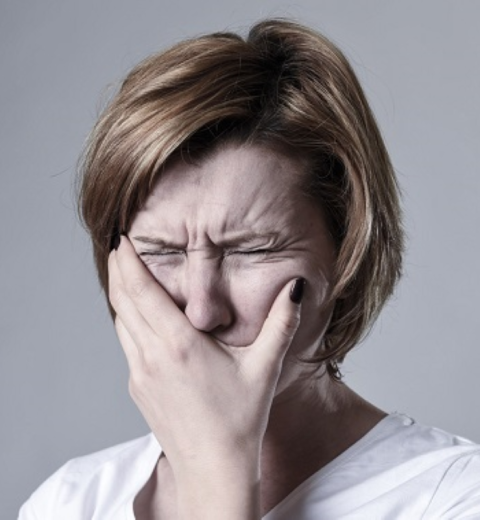

Nerve pain or Neuropathic pain is the pain that originates from the damage or disfunction of the nervous system. The International Association for the Study of Pain (IASP) defines neuropathic pain as pain that happens because of damage or disease in the nerves that sense touch, temperature, and pain (the somatosensory system). A related term, neuropathy, means a problem or damage in a nerve that affects how it works.

Trigeminal neuralgia (TN) is a one of the most common chronic pain condition that affects the facial region affecting trigeminal nerve, which is responsible for sensation in the face.
Trigeminal neuralgia (TN), also known as tic douloureux or the “suicide disease”, characterized by severe, excruciating pain, which is experienced as sudden, severe shock-like episodes in or around the face.
It’s known for causing sudden, severe, electric shock-like or stabbing facial pain, usually on one side of the face. The pain can be triggered by even mild stimulation of the face, such as brushing teeth, chewing, talking, or a breeze.
Sudden, sharp, severe, brief, stabbing, recurrent episodes of shock like electric pain.
Usually affects the mid, and or lower face and jaw, but can also impact the area around the nose and sometimes rarely above the eye.
Typically unilateral (one-sided).
Attacks may last seconds to minutes, and may occur in episodes.
Touching the face, eating, talking, brushing teeth, or even a breeze.
Often due to vascular compression of the trigeminal nerve root (e.g., a blood vessel pressing on the nerve near the brainstem).
Caused by an underlying disease process such as a tumor compressing the trigeminal nerve (e.g., meningioma, posterior fossa tumor).
Occipital neuralgia is a type of chronic headache disorder that results from irritation or injury to the occipital nerves which include the greater, lesser, and third occipital nerves that run from the upper cervical spine to the scalp. It is often characterized by intense, sharp, or electric-shock-like pain in the back of the head, neck, and behind the ears typically on one side of the head.
Base of the skull, scalp, behind the eyes, or upper neck.
Excruciating, sharp, stabbing, and sharp, piercing, throbbing, or shock-like.
Touching the scalp, brushing hair, turning the neck.
Scalp tenderness, light sensitivity, and pain with neck movement.
anesthetic and/or corticosteroid injections
anticonvulsants (e.g., carbazapine, oxcarbazepine, gabapentin), NSAIDs, muscle relaxants, , tricyclic antidepressants
Stretching, posture correction
Atypical odontalgia (AO) also known as persistent dentoalveolar pain disorder is a chronic pain condition characterized by persistent tooth-related pain without any identifiable dental or radiographic cause.
Cognitive Behavioral Therapy (CBT) or multidisciplinary pain management
Avoid unnecessary dental treatments, as these often worsen symptom
CRPS is a chronic neuropathic pain disorder that develops after trauma associated with nerve injury. CRPS is usually triggered by a sprain, fracture, or a crush or penetrating injury and most often affects one or more limbs.